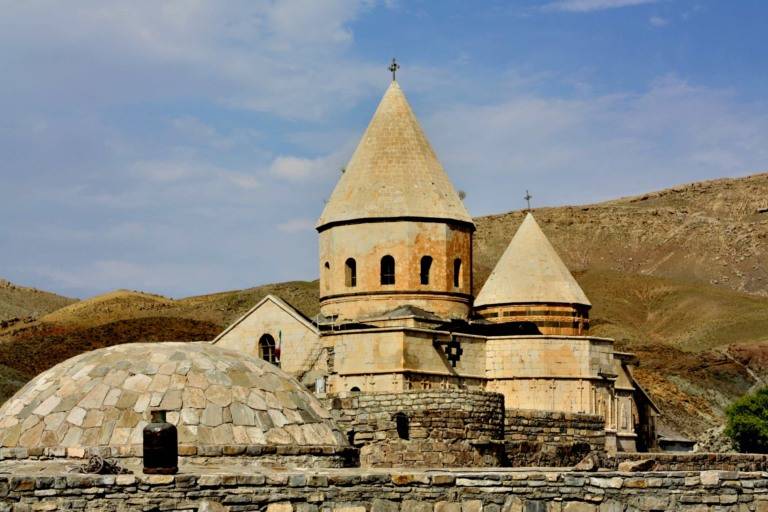Good Friday facts and history: Good Friday, a Christian religious holiday, falls within Holy Week, the period leading up to Easter Sunday. Its primary purpose is to commemorate the crucifixion and death of Jesus Christ on the cross at Calvary, a pivotal event in Christian theology. This observance is an integral part of the Paschal Triduum, a three-day period preceding Easter.
Good Friday Facts and History
1. Good Friday Information: It is known by various names, including Holy Friday, Great Friday, Great and Holy Friday, and Black Friday. Many Christians, encompassing denominations like Catholics, Eastern Orthodox, Lutherans, Anglicans, Methodists, Oriental Orthodox, United Protestants, and some Reformed Christians, engage in fasting and attend church services on this solemn day.
It’s worth noting that customs and practices on Good Friday can vary among different Christian groups and cultures. While it is a time for sober reflection on Jesus’ crucifixion, it holds profound theological significance within the Christian faith, highlighting the belief in redemption and the promise of new life through Christ’s sacrificial act. Here is a brief history of Good Friday:
Good Friday Facts
2. Crucifixion of Jesus: Good Friday marks the day on which Jesus was arrested, tried, and crucified by the Roman authorities in Jerusalem. According to Christian tradition, this event took place around 30–33 AD.
3. Religious Observance: Good Friday is a solemn and reflective day for Christians. Many attend church services that focus on the Passion of Christ, including the reading of the biblical accounts of Jesus’ trial, crucifixion, and death.
4. Symbolism: The cross, specifically the crucifix (a cross with a representation of Jesus’ body), is a central symbol of Good Friday, serving as a reminder of Jesus’ sacrifice for the redemption of humanity’s sins.
5. Liturgical Practices: Good Friday services often include the veneration of the cross, where participants may kneel before the cross as an act of devotion. In some Christian traditions, the church bells are rung in a mournful manner.
6. Fasting and Abstinence: In some Christian denominations, fasting and abstinence from meat are observed on Good Friday as acts of penance and reflection.
7. Processions and Reenactments: In various parts of the world, especially in predominantly Catholic regions, processions and reenactments of the Passion of Christ take place, involving participants in biblical costumes.
8. Tenebrae Services: Some churches hold Tenebrae services on Good Friday evening, characterized by the gradual extinguishing of candles or lights, symbolizing the growing darkness at the time of Jesus’ crucifixion.
9. Day of Mourning: Good Friday is often referred to as a day of mourning and reflection as Christians contemplate the significance of Jesus’ sacrificial death and the hope of redemption it brings.
10. Easter Preparation: Good Friday is followed by Holy Saturday, a day of anticipation and preparation for Easter Sunday, when Christians celebrate the resurrection of Jesus, signifying victory over sin and death.
It’s important to note that the observance of Good Friday can vary among Christian denominations and cultures. While it is a day of somber reflection on Jesus’ crucifixion, it also holds profound theological significance in the Christian faith, emphasizing the belief in redemption and the promise of new life through Christ’s sacrifice.
Good Friday History
11. Biblical Accounts: The historical basis for Good Friday comes from the New Testament of the Bible, particularly the four Gospels: Matthew, Mark, Luke, and John. These accounts describe the events leading up to and including the crucifixion of Jesus in Jerusalem.
12. Date and Timing: The precise date of Good Friday varies from year to year because it is linked to Easter, which is a movable feast based on the lunar calendar. Good Friday falls on the Friday immediately preceding Easter Sunday, which, in turn, falls on the first Sunday following the first full moon after the vernal equinox (around March 21).
13. Good Friday meaning: According to the Gospels, Jesus was arrested on the night of Maundy Thursday (the day of the Last Supper) in the Garden of Gethsemane. He underwent a series of trials and was ultimately sentenced to crucifixion by the Roman governor Pontius Pilate.
14. The Crucifixion: On Good Friday, Jesus was crucified at a place called Golgotha, or Calvary, just outside the walls of Jerusalem. He was crucified alongside two criminals, and his crucifixion was ordered with a placard above his head that read “King of the Jews” in Hebrew, Latin, and Greek.
15. The Death of Jesus: Jesus was crucified around the third hour (approximately 9:00 AM) and died around the ninth hour (approximately 3:00 PM), according to the Gospels. His last words, as recorded in the Bible, include “It is finished” and “Into your hands, I commit my spirit.”
16. Significance: Good Friday is significant in Christian theology because it represents the culmination of Jesus’ earthly mission and the sacrifice he made for the forgiveness of humanity’s sins. Christians believe that through his death, Jesus offered redemption and reconciliation between God and humanity.
17. Solemn Observance: Good Friday is observed with solemnity and reflection in Christian churches around the world. Many churches hold special services on this day, focusing on the Passion of Christ and the reading of Gospel accounts related to the crucifixion.
18. Liturgical Practices: Common practices on Good Friday include the veneration of the cross, the Stations of the Cross (a devotional practice retracing Jesus’ steps to Calvary), and, in some Christian traditions, the observation of fasting and abstinence from meat.
19. Preparation for Easter: Good Friday is followed by Holy Saturday, a day of waiting and preparation for Easter Sunday, when Christians celebrate the resurrection of Jesus, signifying victory over sin and death.
Good Friday holds a central place in Christian faith, emphasizing the belief that Jesus’ crucifixion was a redemptive act that offers forgiveness and the hope of eternal life to those who believe.


